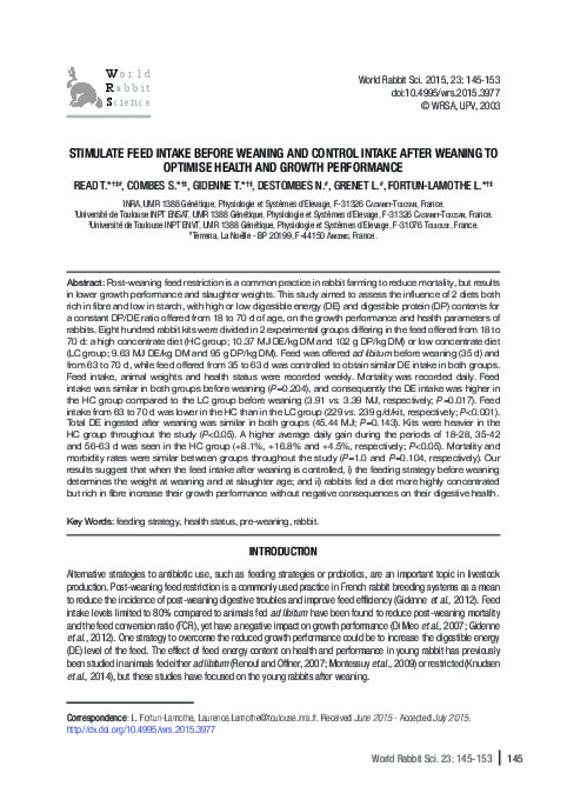JavaScript is disabled for your browser. Some features of this site may not work without it.
Buscar en RiuNet
Listar
Mi cuenta
Estadísticas
Ayuda RiuNet
Admin. UPV
Stimulate feed intake before weaning and control intake after weaning to optimise health and growth performance
Mostrar el registro completo del ítem
Read, T.; Combes, S.; Gidenne, T.; Destombes, N.; Grenet, L.; Fortun-Lamothe, L. (2015). Stimulate feed intake before weaning and control intake after weaning to optimise health and growth performance. World Rabbit Science. 23(3):145-153. https://doi.org/10.4995/wrs.2015.3977
Por favor, use este identificador para citar o enlazar este ítem: http://hdl.handle.net/10251/58963
Ficheros en el ítem
Metadatos del ítem
| Título: | Stimulate feed intake before weaning and control intake after weaning to optimise health and growth performance | |
| Autor: | Read, Tehya Combes, Sylvie Gidenne, Thierry Destombes, Nicolas Grenet, Luc Fortun-Lamothe, Laurence | |
| Fecha difusión: |
|
|
| Resumen: |
[EN] Post-weaning feed restriction is a common practice in rabbit farming to reduce mortality, but results in lower growth performance and slaughter weights. This study aimed to assess the influence of 2 diets both rich ...[+]
|
|
| Palabras clave: |
|
|
| Derechos de uso: | Reserva de todos los derechos | |
| Fuente: |
|
|
| DOI: |
|
|
| Editorial: |
|
|
| Versión del editor: | https://doi.org/10.4995/wrs.2015.3977 | |
| Código del Proyecto: |
|
|
| Agradecimientos: |
|
|
| Tipo: |
|








